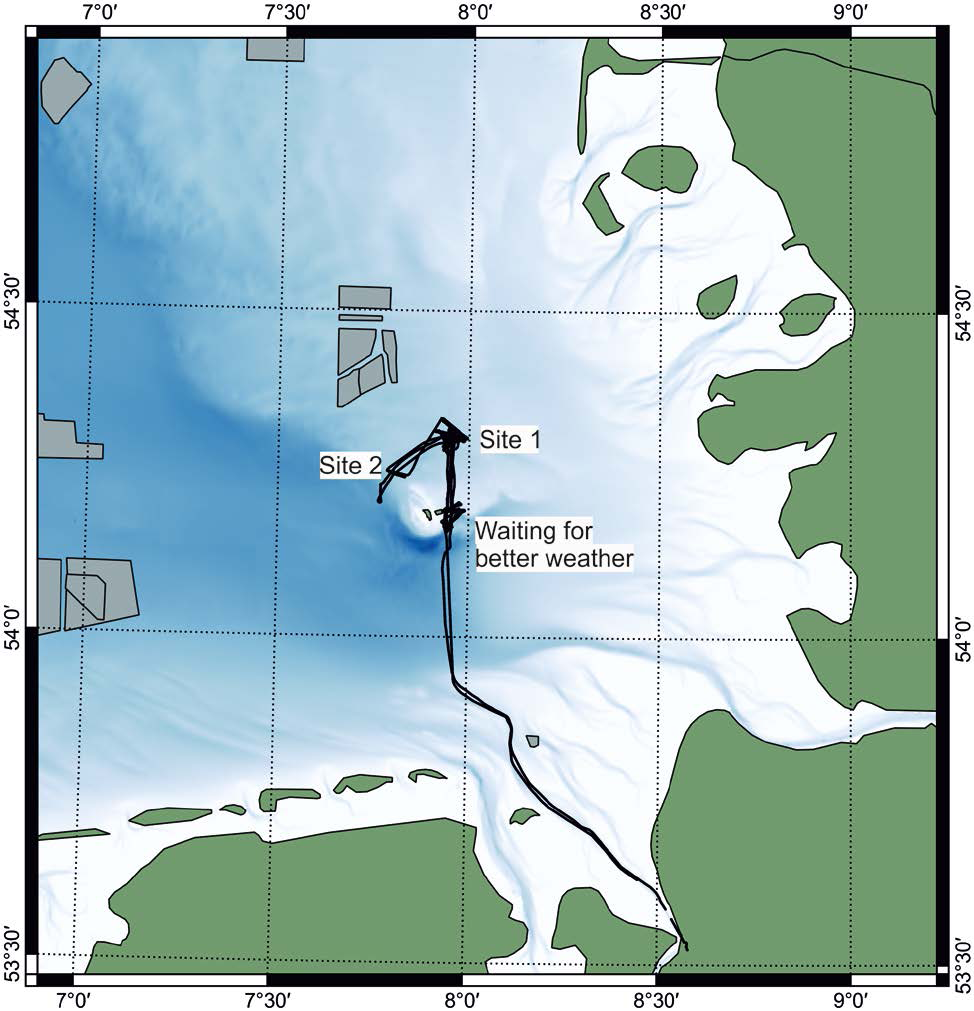2019 03 - R/V Heincke Cruise He525

03.03.-10.03.2019 : Bremerhaven - Bremerhaven
Chief scientist: Dr. Hanno Keil
Chief Seismic: Dr. Stefan Wenau
MTU Participants: Bihler, Morales-Hernandez
Groups involved:
- Working Group Marine Technology/Environmental Research, Department of Geoscience, Bremen University (GeoB AG Spiess (MTU))
- Abteilung Baugrunderkunding, Fraunhofer IWES, Bremen
Instrumentation:
- Sodera micro GI (Generator-Injector) Gun 2 x 0.1 L
- DuraSpark 400 (Fraunhofer IWES)
- Boutlder Detect Frame
- Digital HTI single hydrophone streamer (72 channel) at 1 m spacing (Fraunhofer IWES)
- Innomar SES2000
- Multibeam Komgsberg EM710
Cruise He525 was carried out to test a new seismic acquisition approach, developed within the BMWi-Project ‘BoulderDetect’, in the Pleistocene sedimentation environment of the North Sea. The design consists of a rigid 8 x 2.5 m frame structure with a shallow water streamer system attached at the lower side. The frame is towed at the sea surface and is part of a novel method to apply acoustic beamforming algorithms to conventional seismic data. Specialized diffraction imaging approaches are used to detect glacial boulders in the subsurface.
The cruise was generally affected by difficult weather conditions, however, due to the early time in year this was not unexpected. These conditions restricted the total survey time to 1.7 days of a total of 3.25 working days at sea.
The target area for the device tests was located north of island Helgoland. Due to personal communication with the Federal Bureau of Hydrography (BSH) and the Alfred-Wegener Institut (AWI) the presence of glacial boulders on the seafloor was known for this site. Within the 1.7 survey days this area was mapped densely with the towed frame, Micro-GI Airgun and Sparker as acoustic sources and multibeam sonar and parametric subbottom profiler. To test a second diffraction analysis approach also several 2D-seismic lines were acquired.
